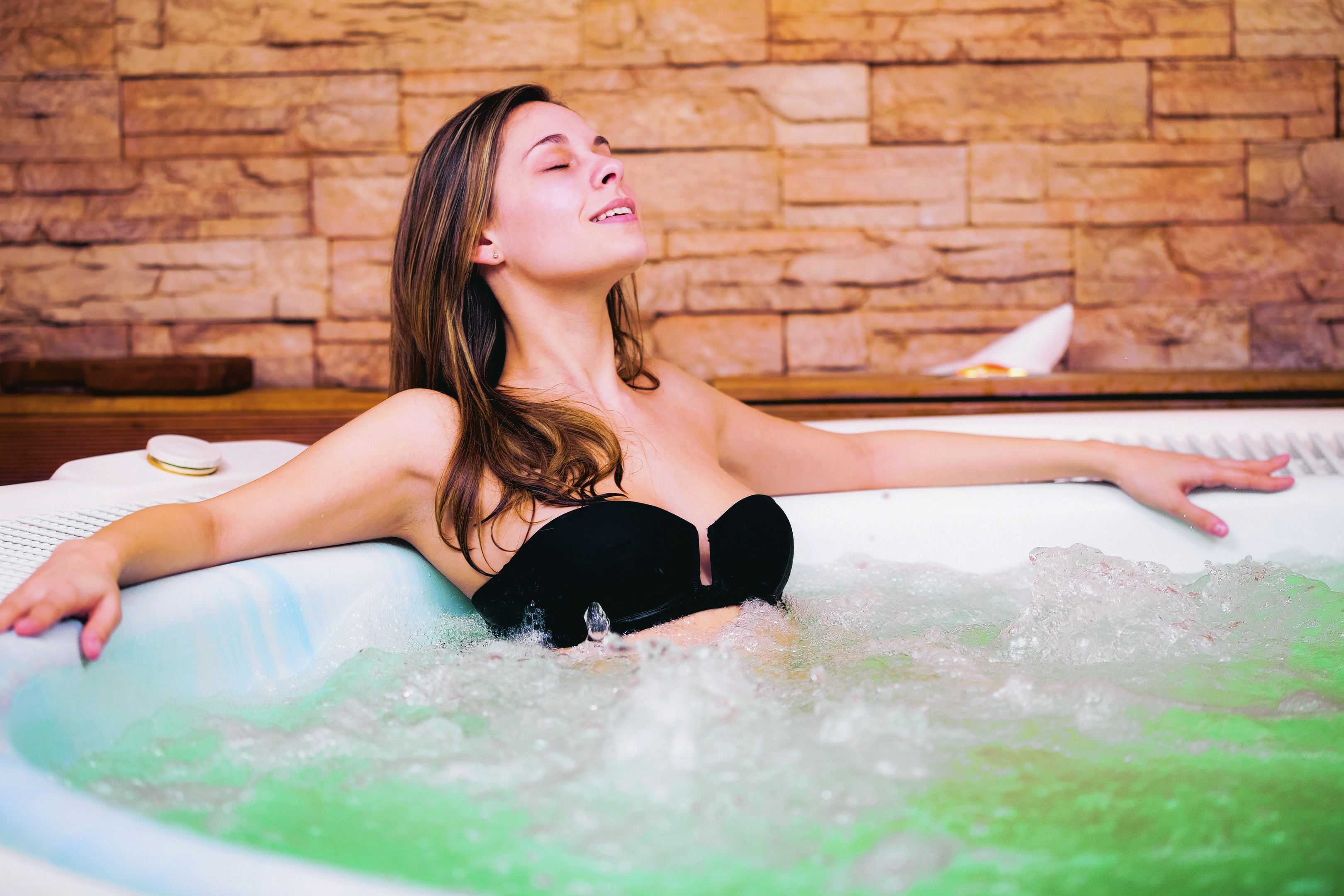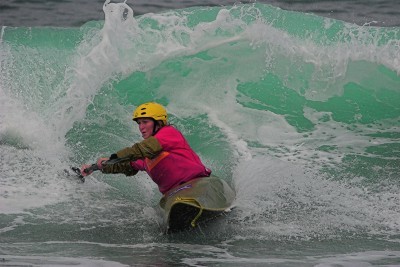After years of crippling pain, surf kayak champion Tracy Sherrington, from Aviemore, has finally found some relief thanks to the ancient treatment of hydrotherapy
After a career involving being a skiing instructor, a white water, surf and sea kayak coach and competing in surf kayaking, Tracy Sherrington became Scottish Champion and World Champion in the 1990s. However, after a serious skiing accident in 1996 followed by a life-threatening car crash in 1999, Tracy suffered permanent spinal damage which caused her immense pain.
Tracy said: “I had terrible pain in my neck, back and pelvis and began to have unbelievable headaches and unexplained nerve pain in my legs, hands, feet and face.”
Tracy, who worked as a senior lecturer in outdoor education and coaching at North Glasgow College, was advised by her chronic pain consultant, doctor and also her occupational health specialist at work to take time off to receive treatment and recover from her injuries.
“I knew I should have stopped, but the sea, snow and teaching meant everything to me, my husband and all of my friends. I would wear a neck brace until I got to the river’s edge then take it off.
“I was told by an orthopaedic surgeon that I could not do any further damage so I didn’t think about my future health, just getting on to the water. However, I was eventually convinced to take nine weeks off – and was never able to go back to work again.”
Specialists prescribed strong medications for Tracy to help her cope with the chronic neuropathic nerve pain, however she says the pills affect her memory which in part prevents her from working.
So Tracy, who was World Surf Kayak champion in 2001 and 2007, decided to install a state-of-the-art hydrotherapy tub into her home, which she says has helped to ease her pain and give her increased movement.
“Not being able to work – and most days not getting out at all – meant my life changed dramatically. The medications help, but it is not a long-term solution. I want to get back to the sea and to coaching. I am determined to relieve my pain without mind-numbing pills, which is why I looked into getting a hydrotherapy tub.
“I had read about hydrotherapy really helping people with sports injuries so I wanted to get a tub with strong jets which could be adjusted to the individual areas which needed massaging.
“Within weeks of the tub arriving, my osteopath was surprised at the increase in movement, and, for the first time in a long time, I can see a light beginning to flicker at the end of the tunnel.”
Hydrotherapy is a part of medicine, in particular of naturopathy, occupational therapy and physiotherapy, that involves the use of water for pain relief and treatment.
Immersing yourself in a heated pool can help muscles to relax and reduce pressure in joints. Kim Clark, manager of hot tub specialists Highland Home Centre, said: “People with arthritis, muscular dystrophy and victims of accidents have all reported reduced pain in the 34-degree temperatures.”
Hot water stimulates the immune system and increases circulation, helping to relieve the body of toxins. By soothing nerves, hot water calms and relaxes the body. Hydrotherapy baths have been used for water births as it relaxes the mother, reduces blood loss and birth pain.
David Jenkins, sports therapist from Sports Therapy Scotland, said: “Hydrotherapy is a great way to enhance movement after sports injuries. The water protects limbs whilst they are healing. Rehabilitation in water enables the brain to connect again to the muscles and learn how to move properly – without causing any further injury or pain. Athletes are able to progress from hardly walking to running in water, to eventually exercising again on dry land.”
Jane Tadman, from Arthritis Research UK, said: “Hydrotherapy is used as a treatment method for a wide range of conditions including osteoarthritis, back pain and psoriatic arthritis, as well as treating sporting injuries.
“Scientific studies have shown that hydrotherapy can improve strength and flexibility of the affected joints whilst also ensuring general fitness levels are maintained for those living with various types of arthritis. In general, hydrotherapy is one of the safest treatments for arthritis and back pain.”
Tracy said: “It gives me amazing relief so the hot tub is not just a fun addition to the garden – it’s my rehabilitation studio.”
But there are no hot tub parties for Tracy. “The tub is mine – nobody else is allowed in except by special invitation!”
10 HEALTH BENEFITS OF A HOT TUB
1. Relief from chronic pain.
Hot tub jets can help people suffering chronic pain by massaging pressure points in the body where pain is at its worse.
2. No more stiff joints.
Blood flow to an injured joint causes painful swelling, but warm water will help dilate the blood vessels, reducing pain.
3. Muscle pain.
Warm water loosens muscles in the same way as a hot water bottle and the pressurised jets can target a particularly painful area.
4. Soothing arthritis.
As the body is lighter and easier to move in water, arthritis pain is reduced.
5. Insomnia.
Spending 15 minutes in a hot tub before bed will tell your body it’s time to relax and sleep.
6. Blood pressure.
Soaking in hot water dilates the blood vessels – reducing blood pressure in as little as 20 minutes.
7. Fitness.
Pain-free, low impact exercise. Water provides a natural resistance – no more gym!
8. Improved immune system.
Warm water increases blood flow and circulation of white blood cells allowing the immune system to get rid of unwanted materials more efficiently, helping to fight colds and illnesses.
9. Help clear respiratory infections.
Breathing in steam helps relieve swollen lungs, allowing mucus to move more easily, making way for oxygen.
10. Prevent headaches.
Headaches are often caused by stress, so relaxing in a hot tub can ease your sore head as well as sore limbs.

